Abstract
Intact air-grown (photosynthetic photon flux density, 400 microeinsteins per square meter per second) clover plants (Trifolium subterraneum L.) were transfered to high CO2 (4000 microliters CO2 per liter; photosynthetic photon flux density, 400 microeinsteins per square meter per second) or to high light (340 microliters CO2 per liter; photosynthetic photon flux density, 800 microeinsteins per square meter per second) to similarly stimulate photosynthetic net CO2 uptake. The daily increment of net CO2 uptake declined transiently in high CO2, but not in high light, below the values in air/standard light. After about 3 days in high CO2, the daily increment of net CO2 uptake increased but did not reach the high light values. Nightly CO2 release increased immediately in high light, whereas there was a 3-day lag phase in high CO2. During this time, starch accumulated to a high level, and leaf deterioration was observed only in high CO2. After 12 days, starch was two- to threefold higher in high CO2 than in high light, whereas sucrose was similar. Leaf carbohydrates were determined during the first and fourth day in high CO2. Starch increased rapidly throughout the day. Early in the day, sucrose was low and similar in high CO2 and ambient air (same light). Later, sucrose increased considerably in high CO2. The findings that (a) much more photosynthetic carbon was partitioned into the leaf starch pool in high CO2 than in high light, although net CO2 uptake was similar, and that (b) rapid starch formation occurred in high CO2 even when leaf sucrose was only slightly elevated suggest that low sink capacity was not the main constraint in high CO2. It is proposed that carbon partitioning between starch (chloroplast) and sucrose (cytosol) was perturbed by high CO2 because of the lack of photorespiration. Total phosphate pools were determined in leaves. Concentrations based on fresh weight of orthophosphate, soluble esterified phosphate, and total phosphate markedly declined during 13 days of exposure of the plants to high CO2 but changed little in high light/ambient air. During this time, the ratio of orthophosphate to soluble esterified phosphate decreased considerably in high CO2 and increased slightly in high light/ambient air. It appears that phosphate uptake and growth were similarly stimulated by high light, whereas the coordination was weak in high CO2.
Full text
PDF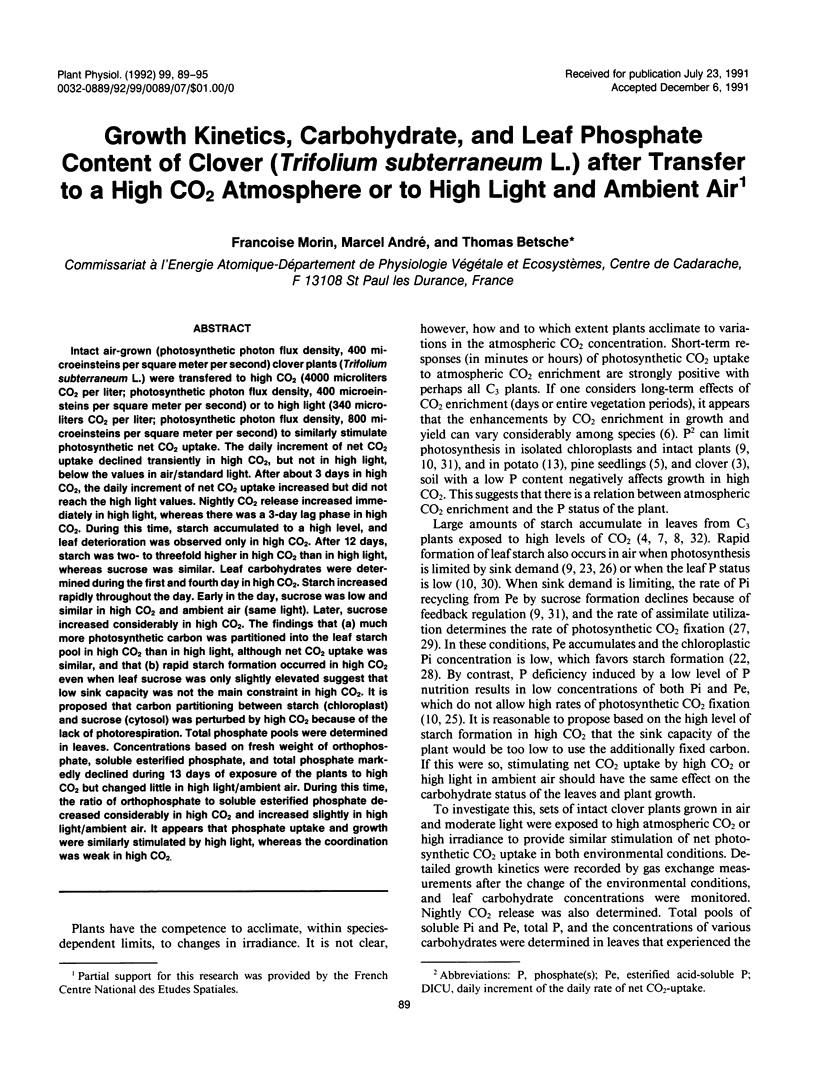
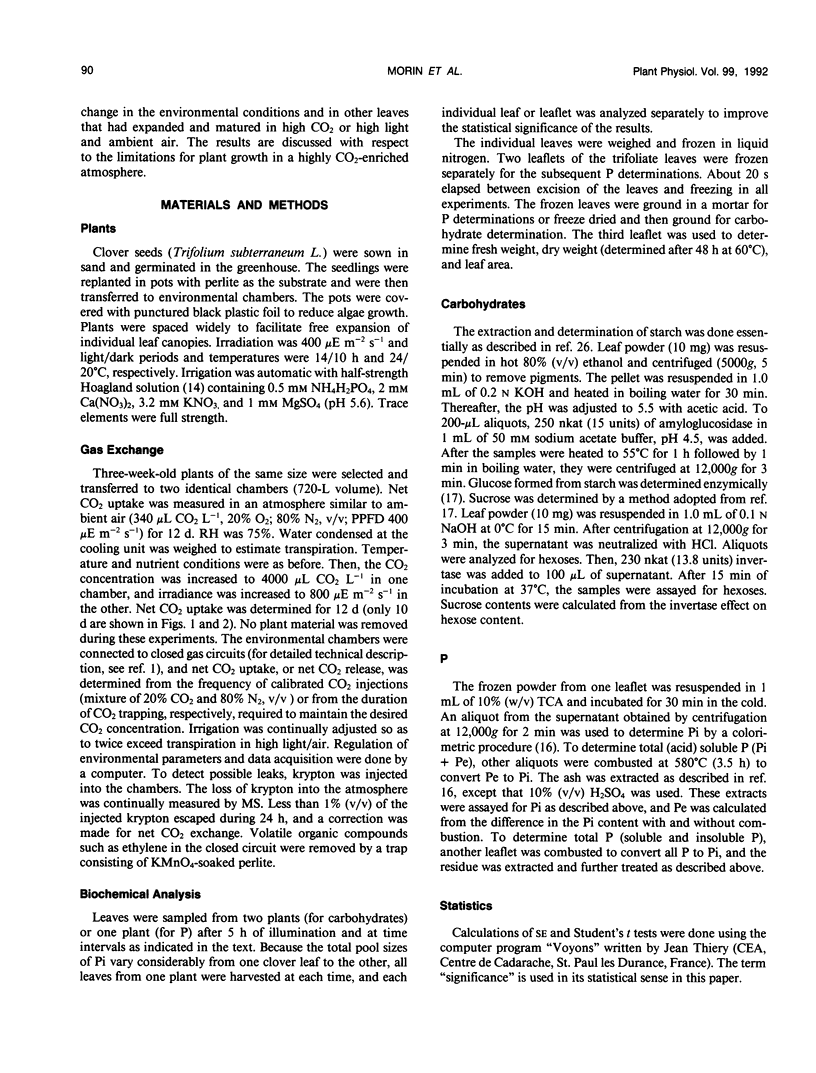
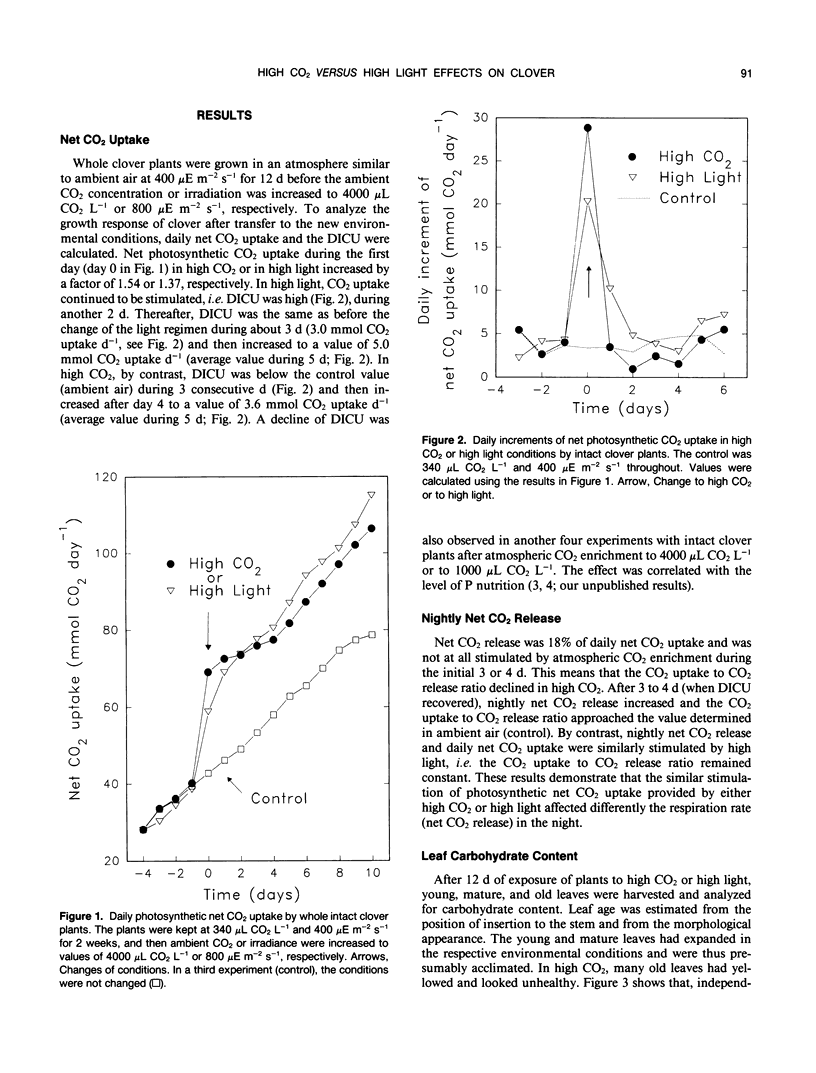
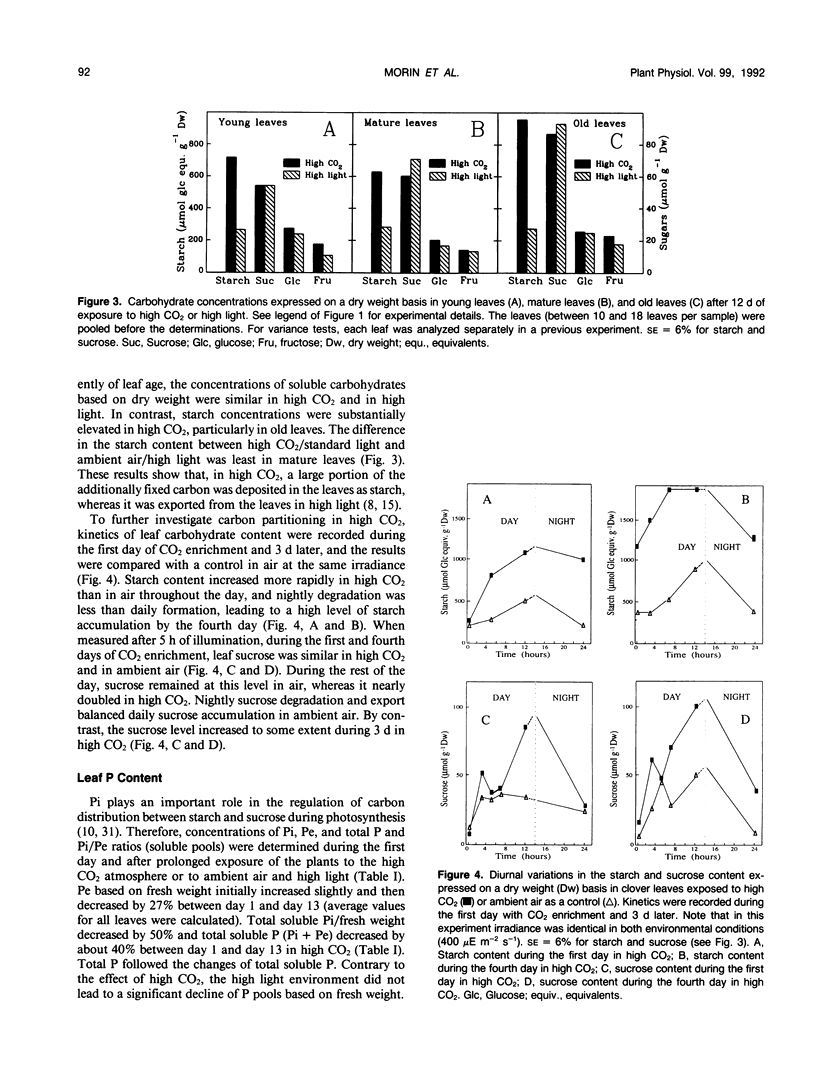
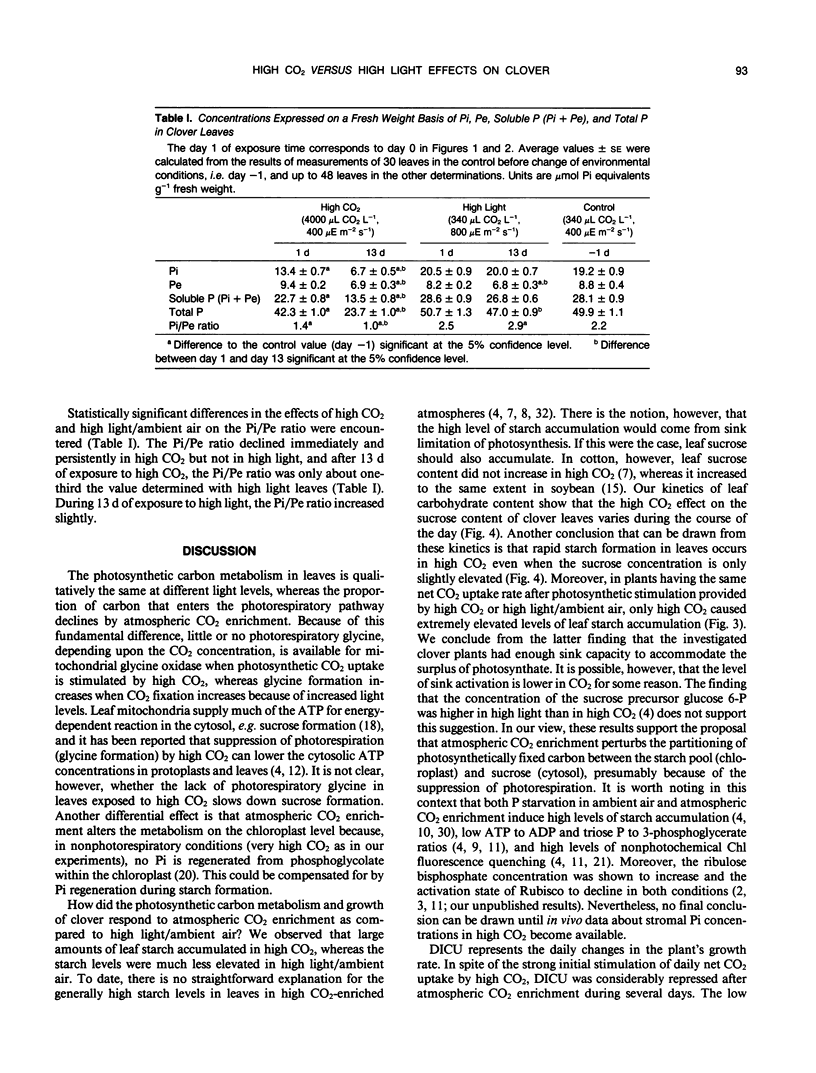
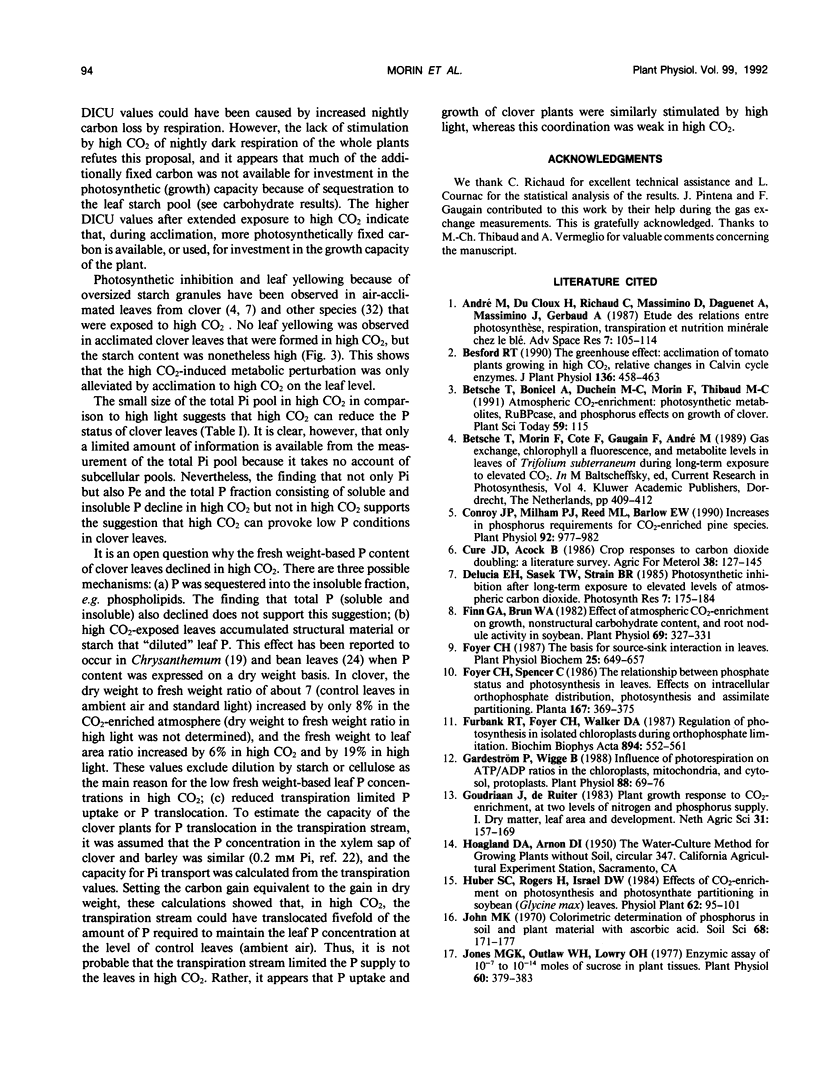
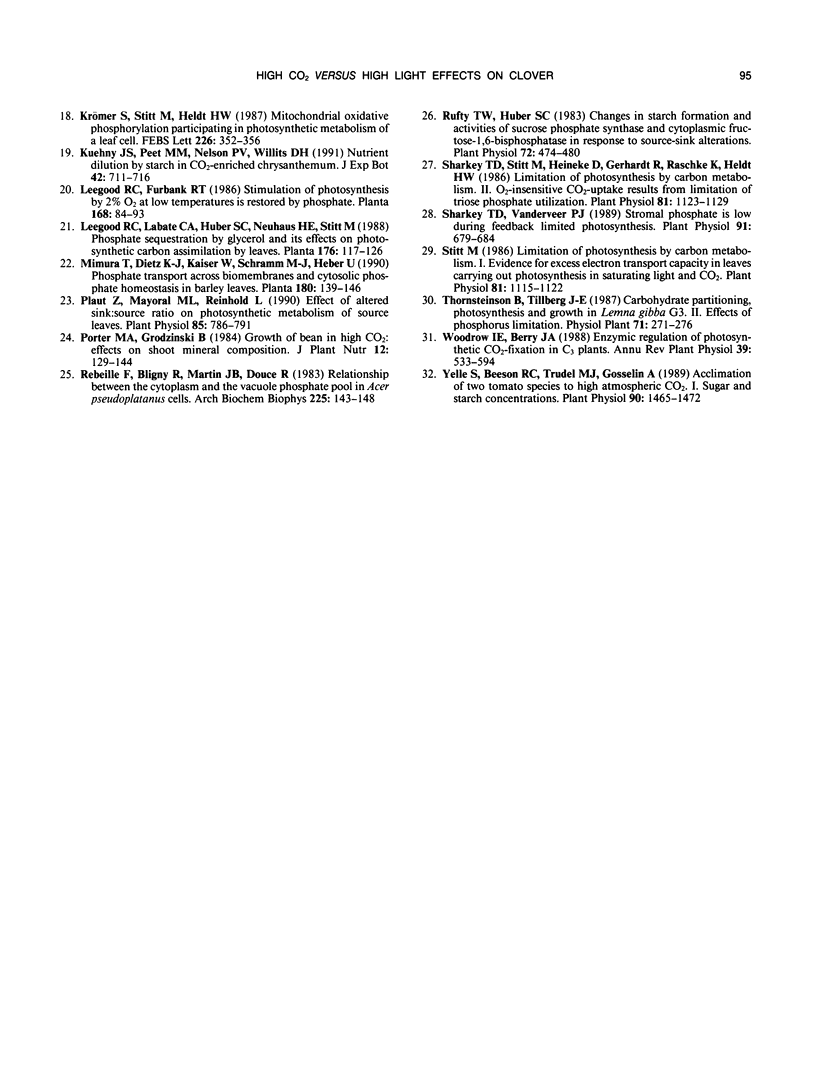
Selected References
These references are in PubMed. This may not be the complete list of references from this article.
- Andre M., Ducloux H., Richaud C., Massimino D., Daguenet A., Massimino J., Gerbaud A. Etude des relations entre photosynthese respiration, transpiration et nutrition minerale chez le ble. Adv Space Res. 1987;7(4):105–114. doi: 10.1016/0273-1177(87)90041-x. [DOI] [PubMed] [Google Scholar]
- Conroy J. P., Milham P. J., Reed M. L., Barlow E. W. Increases in Phosphorus Requirements for CO(2)-Enriched Pine Species. Plant Physiol. 1990 Apr;92(4):977–982. doi: 10.1104/pp.92.4.977. [DOI] [PMC free article] [PubMed] [Google Scholar]
- Finn G. A., Brun W. A. Effect of Atmospheric CO(2) Enrichment on Growth, Nonstructural Carbohydrate Content, and Root Nodule Activity in Soybean. Plant Physiol. 1982 Feb;69(2):327–331. doi: 10.1104/pp.69.2.327. [DOI] [PMC free article] [PubMed] [Google Scholar]
- Gardeström P., Wigge B. Influence of Photorespiration on ATP/ADP Ratios in the Chloroplasts, Mitochondria, and Cytosol, Studied by Rapid Fractionation of Barley (Hordeum vulgare) Protoplasts. Plant Physiol. 1988 Sep;88(1):69–76. doi: 10.1104/pp.88.1.69. [DOI] [PMC free article] [PubMed] [Google Scholar]
- Jones M. G., Outlaw W. H., Lowry O. H. Enzymic assay of 10 to 10 moles of sucrose in plant tissues. Plant Physiol. 1977 Sep;60(3):379–383. doi: 10.1104/pp.60.3.379. [DOI] [PMC free article] [PubMed] [Google Scholar]
- Plaut Z., Mayoral M. L., Reinhold L. Effect of altered sink: source ratio on photosynthetic metabolism of source leaves. Plant Physiol. 1987 Nov;85(3):786–791. doi: 10.1104/pp.85.3.786. [DOI] [PMC free article] [PubMed] [Google Scholar]
- Rebeille F., Bligny R., Martin J. B., Douce R. Relationship between the cytoplasm and the vacuole phosphate pool in Acer pseudoplatanus cells. Arch Biochem Biophys. 1983 Aug;225(1):143–148. doi: 10.1016/0003-9861(83)90017-6. [DOI] [PubMed] [Google Scholar]
- Rufty T. W., Huber S. C. Changes in Starch Formation and Activities of Sucrose Phosphate Synthase and Cytoplasmic Fructose-1,6-bisphosphatase in Response to Source-Sink Alterations. Plant Physiol. 1983 Jun;72(2):474–480. doi: 10.1104/pp.72.2.474. [DOI] [PMC free article] [PubMed] [Google Scholar]
- Sharkey T. D., Stitt M., Heineke D., Gerhardt R., Raschke K., Heldt H. W. Limitation of Photosynthesis by Carbon Metabolism : II. O(2)-Insensitive CO(2) Uptake Results from Limitation Of Triose Phosphate Utilization. Plant Physiol. 1986 Aug;81(4):1123–1129. doi: 10.1104/pp.81.4.1123. [DOI] [PMC free article] [PubMed] [Google Scholar]
- Sharkey T. D., Vanderveer P. J. Stromal Phosphate Concentration Is Low during Feedback Limited Photosynthesis. Plant Physiol. 1989 Oct;91(2):679–684. doi: 10.1104/pp.91.2.679. [DOI] [PMC free article] [PubMed] [Google Scholar]
- Stitt M. Limitation of Photosynthesis by Carbon Metabolism : I. Evidence for Excess Electron Transport Capacity in Leaves Carrying Out Photosynthesis in Saturating Light and CO(2). Plant Physiol. 1986 Aug;81(4):1115–1122. doi: 10.1104/pp.81.4.1115. [DOI] [PMC free article] [PubMed] [Google Scholar]
- Yelle S., Beeson R. C., Trudel M. J., Gosselin A. Acclimation of Two Tomato Species to High Atmospheric CO(2): I. Sugar and Starch Concentrations. Plant Physiol. 1989 Aug;90(4):1465–1472. doi: 10.1104/pp.90.4.1465. [DOI] [PMC free article] [PubMed] [Google Scholar]


